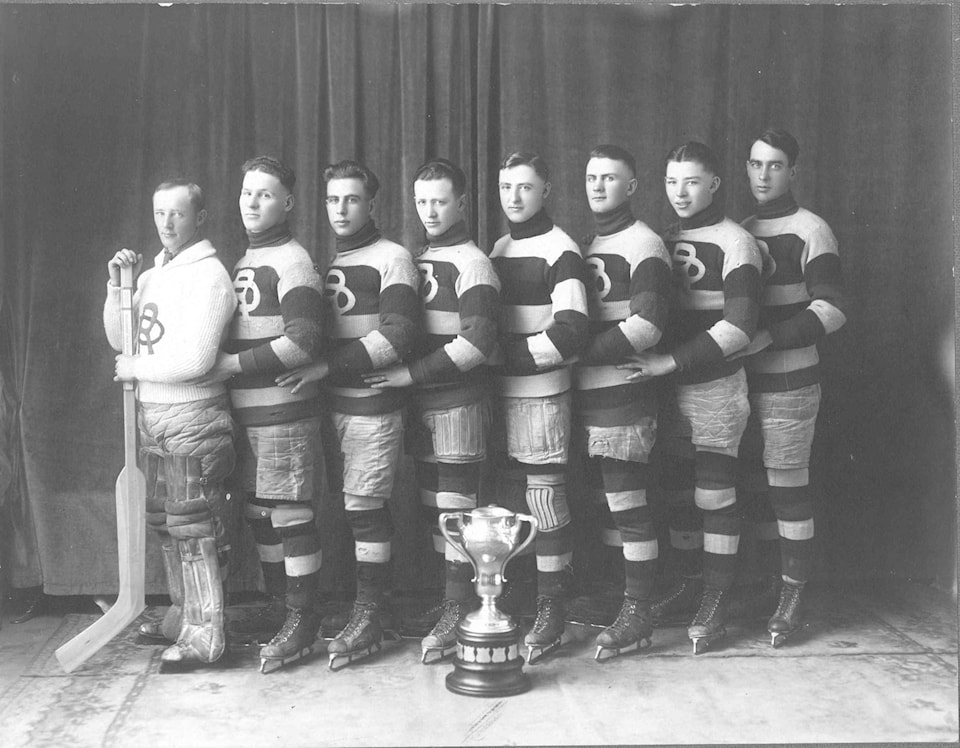The NHL has finally started a new season. It is very different than any other professional hockey season, due to all the challenges created by the COVID pandemic. However, this is probably a good time to reflect back 100 years ago to a time when one of the golden ages of hockey commenced in central Alberta.
The National Hockey League officially dates back to November 1917 when four Canadian teams created a new league to replace the old National Hockey Association. In 1924, the first American NHL team was added with the Boston Bruins. Soon, there were other U.S. teams. This expansion of major league play across the northern United States, as well as Canada, gave a huge boost to the profile of hockey.
Meanwhile, although hockey has been an important part of Red Deer since the earliest pioneer times, the sport hit a lull for a few years. The biggest setback came in February 1907 when the roof of the first indoor rink collapsed under a heavy weight of snow. While there were several proposals to build a new arena, nothing happened for several years.
Hence, all hockey games had to be played outdoors. With the intense cold typical of central Alberta winters, games were often a challenge, or else had to be postponed until the weather improved.
The real low point was hit in 1919, in the aftermath of the First World War. The city only managed to create an outdoor rink using a slough on First Street South (49 Street) on the north side of Parkvale. Many of the rink boards were salvaged from old buildings.
Things began to improve in the early 1920s. A better outdoor rink facility, the Monarch, was created east of City Hall on the south side of Ross Street. More and better players gradually became available. The creation of the local Rotary Club and Elks Lodge provided groups willing to support a local hockey team financially.
Another big improvement came with the re-establishment of women’s hockey in Red Deer in 1922. The teams were strong and placed well in the annual championships during the Banff Winter Festival. It was not uncommon for the local women’s hockey to outdraw the men’s games.
Finally, in 1925, a new covered arena was built. Hockey really took off. In the season following the opening of the facility, the Red Deer Hockey Club won the 1925-1926 Provincial Intermediate Championship. It was the first sports team in the history of the city to attain such an honour.
Within a few years, the women’s team, now called the Amazons, became provincial champions as well. They also defeated the Western Canada champions, the Winnipeg Eaton’s team, but the match was considered an exhibition game.
Another huge boost to hockey came with Oscar “Ossie” Asmundson. He had been a member of the 1925-1926 Red Deer championship team. After a successful time playing in the Pacific Coast Hockey League, he was recruited to play for the New York Rangers, thereby becoming the first Red Deer person to play for the NHL. When the Rangers won the Stanley Cup in 1932-1933, he became Red Deer’s first Stanley Cup champion.
On May 5, 1933, the Red Deer Board of Trade hosted a large banquet to honour the home town hero. Ossie regaled the crowd with his stories about the NHL, the players, the fans, the arenas, the training sessions at Lake Placid and the stand-out games.
Meanwhile, in 1931, the Canadian National Railway radio network began to broadcast Saturday night hockey games of the Toronto Maple Leafs. In 1933, the successor Canadian Radio Broadcasting Commission (later reorganized as the CBC) began broadcasting Montreal games as well.
The next year, Imperial Oil of Canada (Esso) became the major corporate sponsor. The broadcast became known as Hockey Night in Canada. This quickly became one of the most popular broadcasts in Canadian history. Foster Hewitt, with his play-by-play commentary, became a household name.
Thus, with the high quality local hockey and the real-time access to weekly NHL games, hockey entered a true golden age across central Alberta and virtually all of Canada as well.
Red Deer historian Michael Dawe’s column appears Wednesdays.
